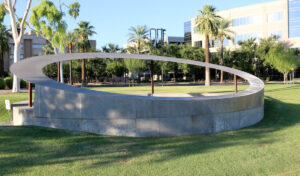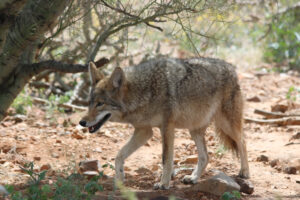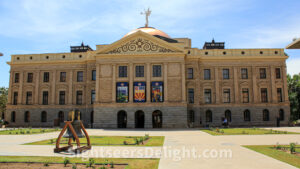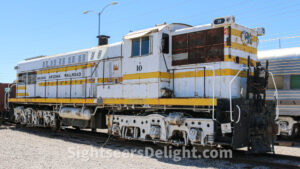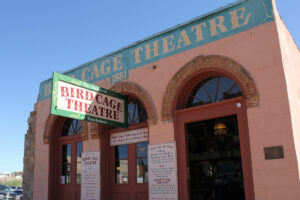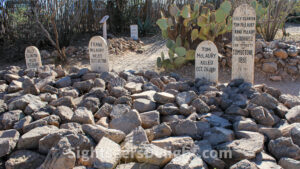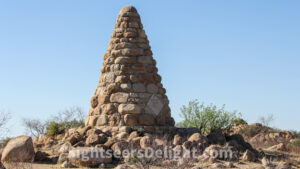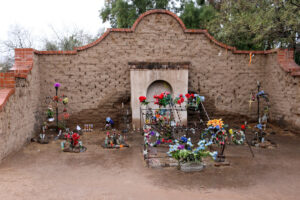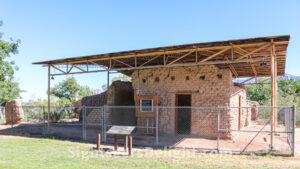Located at the Wesley Bolin Memorial Plaza near the State Capitol in Phoenix, the 9/11 Memorial in Arizona was unveiled on Sept. 11, 2006. The memorial is often — and perhaps best — described as a circular plan with a flat inclined metal ring. The memorial opened to some controversy. The controversy centered on a number of quotes engraved into the ring, including “Congress Questions Why CIA and FBI Didn’t Prevent Attacks” and “You Don’t Win Battles of Terrorism With More Battles.”
The Sonoran Desert is much more than cactuses and coyotes, and the 98-acre Arizona-Sonora Desert Museum shows that. The one-of-a-kind museum features a zoo, botanical garden, art gallery, natural history museum and aquarium. It is home to more than 230 species of animals and 1,200 varieties of plants. The museum, founded in 1952, interprets the natural history of the Sonoran Desert and nearby ecosystems. There are two miles of walking paths that cover 21 acres. The real highlight is the live animal demonstrations, where visitors can witness birds of prey in their element.
85743
Inside the Arizona State Capitol building, which was built in 1901 and predates Arizona’s 1912 entry into the Union as a state, the story of The Grand Canyon State comes to life. Displays include the silver and copper punchbowl service from the USS Arizona, said to be the only one of its kind. it is composed of etched copper panels depicting desert scenes set into a silver bowl ornamented with mermaids, dolphins, waves, and other nautical themes. In addition, the museum also displays a collection of gifts received by Arizona as part of the Merci Train sent by France to the United States following World War II. Outside, the Wesley Bolin Memorial Plaza on the Phoenix state capitol grounds are filled with an impressive collection of monuments, including one to the Navajo Code Talkers of World War II.
85007
Since 1983, the Arizona Railway Museum has been dedicated to preserving and interpreting the state’s railroad history. The museum moved to its current location at the southwestern edge of Tumbleweed Park since 2006. Two items in its collection are listed in the National Register of Historic Places. They are Southern Pacific Railroad Locomotive No. SP 2562 (and Tender No. 8365) and Railroad Steam Wrecking Crane and Tool Car.
85249
The Bird Cage Theatre was a theater, saloon, gambling parlor and brothel. It operated from 1881 to 1889. Of the theatre, someone once called it “the wildest, wickedest night spot between Basin Street and the Barbary Coast.” Stepping into this said-to-be-haunted theater is like stepping into a time machine. When the establishment close in 1889, its doors were sealed until 1934. The old theater remains riddled with bullet holes. One of the more interesting artifacts is a poker table that hosted a game that allegedly lasted for more than eight years, five months and three days. Doc Holliday (the legendary dentist) and Adolphus Busch (who created some beer or something) were among the famous people who participated in the game.
85638
Tombstone opened the “City Cemetery” in 1878. The site is the final resting place of at least 250 people. The cemetery, later called the “Old City Cemetery,” didn’t pick up its current name, “Boothill Graveyard” until about 1929, when the town first hosted Helldorado Days. Its permanent residents include three men — Billy Clanton, Frank McLaury and Tom McLaury — gunned down during the now-infamous Gunfight at the O.K. Corral. By the 1920s, the cemetery was in dire need of restoration. Now restored, the cemetery is one of the city’s main tourist destinations, in part because of its sometimes humorous epitaphs.
85638
The 140-acre Desert Botanical Garden was established in 1939 and is home to more than 21,000 flowers. Plants are on display along five thematic trails that cover a range of topics, including conservation, desert living and people of the Sonoran Desert.
85008
As Ed Schieffelin started prospecting for valuable minerals in southern Arizona during the latter half of the 1870s, his friends insisted he would only find his tombstone. They were wrong. Instead, he discovered silver in an area that would grow into one of the most colorful towns in the country’s history: Tombstone. Over the years, mines in Tombstone produced $85 million in silver. Schieffelin died in Oregon on May 12, 1897, but he insisted his final resting spot be in Tombstone. A 25-foot-tall monument stands atop his burial site and near the location of his original claim.
85638
El Tiradito is a famous shrine in the Old Barrio section of Tucson. The memorial is said to be the only Catholic shrine in the country “dedicated to a sinner buried in unconsecrated ground.” According to one version of the legend, the monument honors Juan Oliveras, an 18-year-old ranch hand who had an affair with his mother-in-law. His father-in-law subsequently killed Oliveras. The original shrine dates to 1870, but the current version dates to 1920s. The shrine is said to exemplify Sonoran Catholicism, a blending of Catholic doctrine with local customs. The National Register of Historic Places added it to its list in 1971.
85701
Fort Lowell Park is home to the extant remains of the former Fort Lowell military post. The United States Army established the Post of Tucson in May 1862; they abandoned it in July 1864 but re-established it a year later. In August 1866, the Army named the installation renamed Camp Lowell in honor of Gen. Charles Russell Lowell. In March 1873, the Army moved the post to its current location, then located on the outskirts of Tucson, and renamed it Fort Lowell in April 1879. The Amry used this location from 1873 until 1891. The park is home to several of the post’s fortmer adobe structures and a museum.
85712

